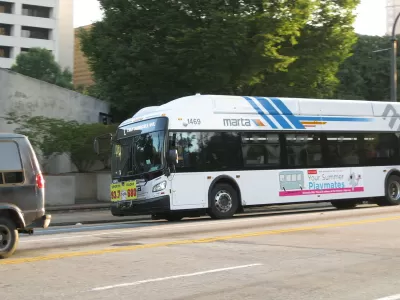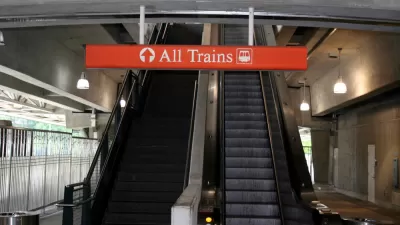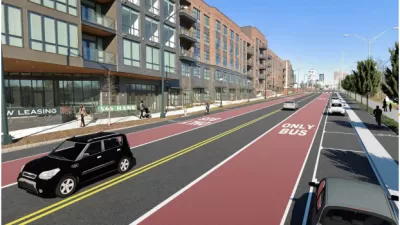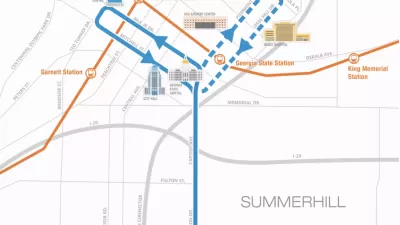Light rail on the Clifton Corridor was once a centerpiece of a $2.7 billion, 40-year transit expansion plans funded by a voter-approved sales tax. Now MARTA is considering using bus rapid transit on the corridor instead.

The Metropolitan Atlanta Rapid Transit Authority (MARTA) is reconsidering its plans to add light rail transit along the Clifton Corridor between Emory University, the Lindbergh Station, and the Centers for Disease Control, announcing that it's now studying bus rapid transit (BRT) for the corridor. The BRT plans for the corridor are the latest sign that MARTA is backtracking from the details of plans announced in late 2018 to expand the city's light rail system, using sales tax revenues approved by voters in 2016.
In an article for the Atlanta Journal Constitution, David Wickert reports that MARTA plans to select a preferred alternative for the Clifton Corridor by October, according to a report from interim CEO Collie Greenwood to the Atlanta City Council transportation committee in March.
MARTA's sudden attention to BRT on the Clifton Corridor is the latest evidence of a trend, reports Wickert: "In February, MARTA announced it would recommend bus rapid transit instead of light rail for the Campbellton Road line in southwest Atlanta. And a recent preliminary report on a section of the Atlanta Beltline found light rail would cost far more than expected."
The original plan also included plans for 13 miles of bus rapid transit lanes in addition to 29 miles of new light rail. As mentioned by Wickert, MARTA is already making progress on the BRT. "MARTA already is preparing to build the region’s first bus rapid transit line along Hank Aaron Drive and Capitol Avenue in Atlanta."
Officials from Emory University (the university has supported the proposed transit along the Clifton Corridor in the past) are quoted in the article saying they support either BRT or light rail for the corridor.
FULL STORY: MARTA considers rapid buses for Atlanta’s Clifton Corridor

Maui's Vacation Rental Debate Turns Ugly
Verbal attacks, misinformation campaigns and fistfights plague a high-stakes debate to convert thousands of vacation rentals into long-term housing.

Planetizen Federal Action Tracker
A weekly monitor of how Trump’s orders and actions are impacting planners and planning in America.

Chicago’s Ghost Rails
Just beneath the surface of the modern city lie the remnants of its expansive early 20th-century streetcar system.

Bend, Oregon Zoning Reforms Prioritize Small-Scale Housing
The city altered its zoning code to allow multi-family housing and eliminated parking mandates citywide.

Amtrak Cutting Jobs, Funding to High-Speed Rail
The agency plans to cut 10 percent of its workforce and has confirmed it will not fund new high-speed rail projects.

LA Denies Basic Services to Unhoused Residents
The city has repeatedly failed to respond to requests for trash pickup at encampment sites, and eliminated a program that provided mobile showers and toilets.
Urban Design for Planners 1: Software Tools
This six-course series explores essential urban design concepts using open source software and equips planners with the tools they need to participate fully in the urban design process.
Planning for Universal Design
Learn the tools for implementing Universal Design in planning regulations.
planning NEXT
Appalachian Highlands Housing Partners
Mpact (founded as Rail~Volution)
City of Camden Redevelopment Agency
City of Astoria
City of Portland
City of Laramie





























